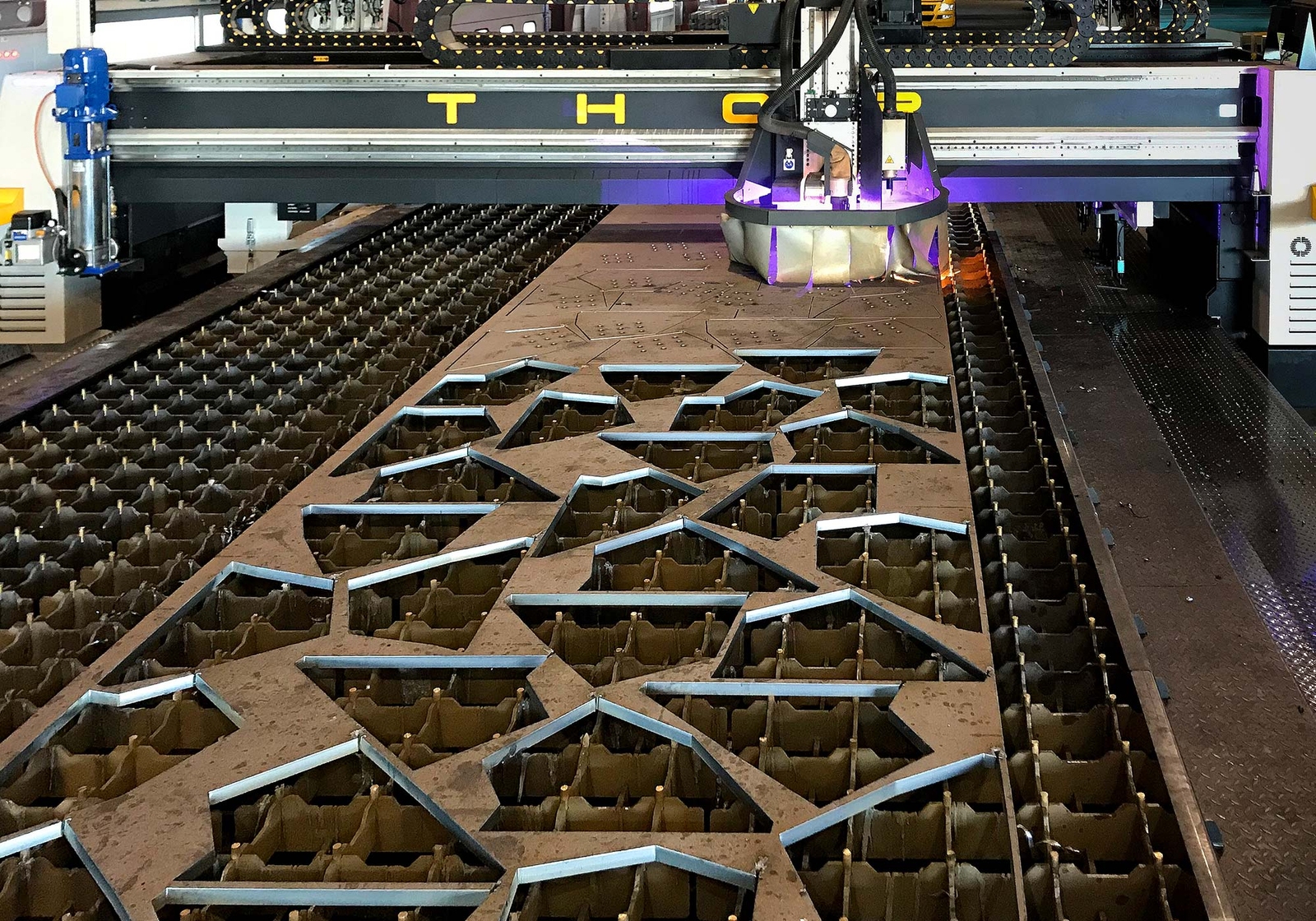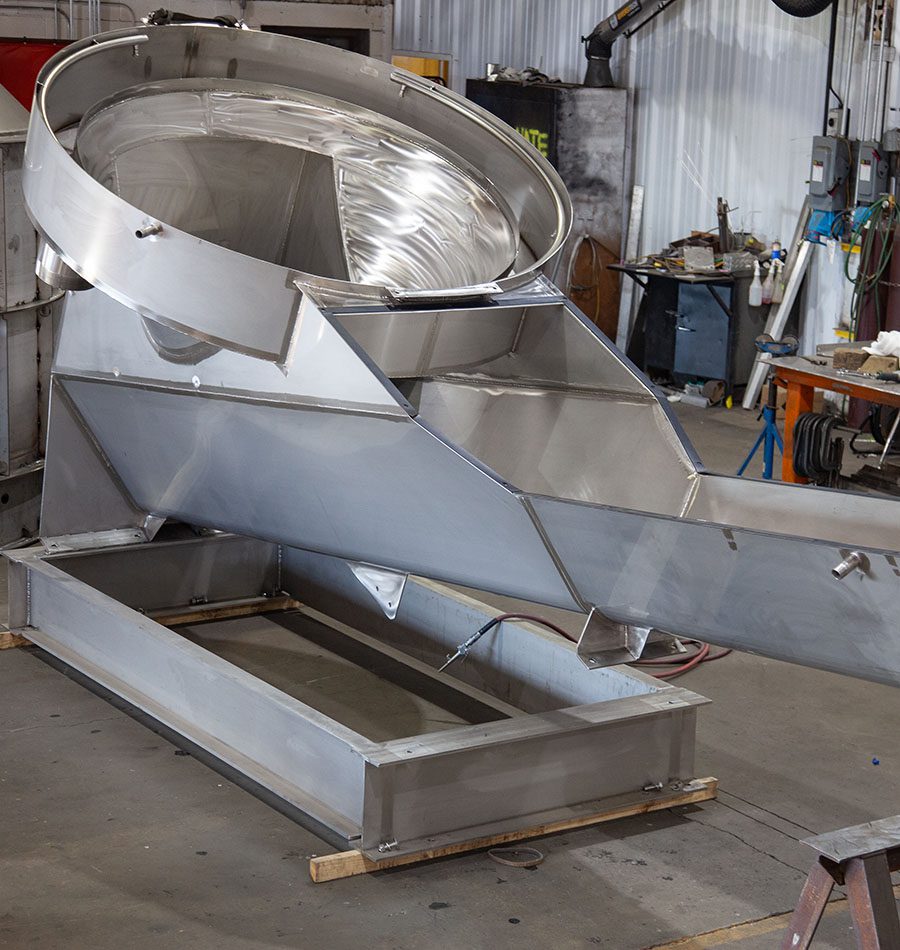Why Alpha Reo Is the Top Choice for Steel Reinforcement
Why Alpha Reo Is the Top Choice for Steel Reinforcement
Blog Article
Ingenious Fads in Steel Construction: Enhancing Resilience and Accuracy
In the world of steel fabrication, the pursuit of durability and accuracy has led to a wave of innovative patterns that are reshaping the market. From innovations in welding modern technologies to the combination of robot automation in construction procedures, the landscape of steel production is developing quickly. High-strength alloy development, paired with the usage of 3D modeling and simulation software application, is pushing the limits of what is achievable in regards to architectural honesty and precision. In addition, the expanding focus on lasting methods in steel production is not only driving performance yet additionally fostering a more eco aware approach to construction. These trends are not simply forming the here and now yet additionally preparing for the future of steel manufacture, guaranteeing more enhancements in toughness and precision.
Advanced Welding Technologies
In the realm of steel construction, the fostering of cutting-edge welding modern technologies has actually significantly changed the market's technique to achieving remarkable high quality and accuracy in architectural welds. Advanced welding innovations, such as laser beam of light welding and rubbing mix welding, have arised as game-changers in the area. Laser light beam welding uses a focused laser beam of light to sign up with metal elements with exceptional accuracy and speed, making it excellent for intricate layouts and slim products. On the other hand, friction stir welding develops extremely strong bonds by mechanically intermixing the molecules of the materials at the joint, getting rid of the requirement for melting the metal. These innovations provide countless advantages, including reduced heat-affected areas, minimal distortion, and boosted mechanical properties in the welded joints. By leveraging these sophisticated welding strategies, steel producers can raise the sturdiness, strength, and accuracy of their structural welds, meeting the significantly requiring requirements of modern-day building tasks.
Robot Automation in Fabrication
Accepting robotic automation has become a foundation of modern-day steel fabrication methods, boosting and streamlining processes efficiency throughout the sector. Robots are transforming the means steel parts are produced, offering unequaled accuracy and rate while reducing human error. These automated systems can handle repeated tasks with constant precision, bring about greater top quality final product.
One key advantage of robotic automation in steel fabrication is the capability to work around the clock without tiredness, substantially raising manufacturing outcome. This continual procedure decreases downtime and accelerates project timelines, ultimately conserving prices for manufacturers. In addition, robotics can be configured to execute elaborate tasks that might be tough or unsafe for human employees, enhancing security in the office.
In addition, robot automation allows seamless combination with various other digital modern technologies, such as computer-aided layout (CAD) software and Web of Points (IoT) systems (steel fixing). This interconnected approach boosts interaction between various phases of manufacture, enhancing process and ensuring real-time tracking and control. As the steel fabrication industry remains to progress, robot automation sticks out as a transformative force driving efficiency and accuracy in producing procedures

High-Strength Alloy Advancement
The improvement of high-strength alloy growth in steel manufacture is reshaping the market's technique to improving product longevity and performance. High-strength alloys are engineered to exhibit superior mechanical residential or commercial properties, such as increased tensile toughness, toughness, and rust resistance compared to standard steel grades. By integrating these innovative alloys right into manufacture processes, suppliers can create parts that stand up to greater stress levels and harsh atmospheres, bring about more reliable and resilient end products.
One secret benefit of high-strength alloy growth is the capacity to reduce product thickness without endangering structural integrity. content This not only results in lighter-weight elements yet additionally adds to set you back savings and enhanced efficiency in construction and assembly procedures. In addition, the boosted strength-to-weight proportion of these alloys allows for the design and building and construction of structures with higher load-bearing capacities while minimizing overall weight.
3D Modeling and Simulation Software
Developments in steel manufacture procedures have actually been dramatically moved by the assimilation of advanced 3D modeling and simulation software application tools. These tools permit producers to develop comprehensive digital designs of their tasks, enabling them to imagine the end product with accuracy prior to any type of manual labor begins. By replicating different tension variables, ecological problems, and structural tons, fabricators can optimize styles helpful site for enhanced longevity and performance. Furthermore, 3D modeling and simulation software program streamline the production process by determining potential problems beforehand, reducing the demand for costly rework and reducing material waste.

Lasting Practices in Steel Manufacturing
Incorporating lasting techniques into steel manufacturing processes is important for decreasing environmental effect and guaranteeing long-lasting resource schedule. One essential lasting practice is the fostering of energy-efficient innovations to minimize greenhouse gas emissions during the steel production process. This includes making use of renewable power resources, such as solar or wind power, to power steel plants and executing energy-efficient devices to optimize power usage.
An additional critical element of lasting steel production is the accountable sourcing of resources. This involves making sure that the iron ore and various other sources made use of in steelmaking are acquired from ecologically pleasant and moral resources. By advertising openness in the supply chain and adhering to strict environmental requirements, steel producers can lessen the negative impacts of resource extraction on regional ecosystems and areas.

Verdict
Finally, the cutting-edge patterns in steel construction such as advanced welding technologies, robot automation, high-strength alloy he said growth, 3D modeling and simulation software program, and lasting methods are enhancing the toughness and precision of steel items. These innovations are changing the steel manufacture market by improving quality, sustainability, and performance. It is clear that the future of steel construction exists in accepting these advanced innovations to meet the needs of modern building and construction and manufacturing sectors.
In the realm of steel manufacture, the pursuit of durability and accuracy has actually led to a wave of ingenious fads that are reshaping the market.In the realm of steel construction, the fostering of advanced welding modern technologies has dramatically revolutionized the market's strategy to achieving remarkable quality and precision in architectural welds. As the steel construction sector continues to progress, robot automation stands out as a transformative pressure driving efficiency and precision in manufacturing processes.
In addition, recycling and reusing steel scrap and waste products play a significant role in improving the sustainability of steel manufacturing. Alpha reo.In final thought, the cutting-edge fads in steel manufacture such as innovative welding modern technologies, robotic automation, high-strength alloy growth, 3D modeling and simulation software program, and lasting practices are boosting the durability and accuracy of steel items
Report this page